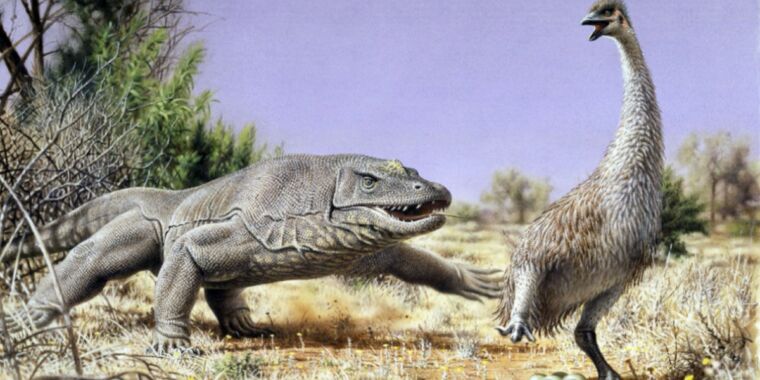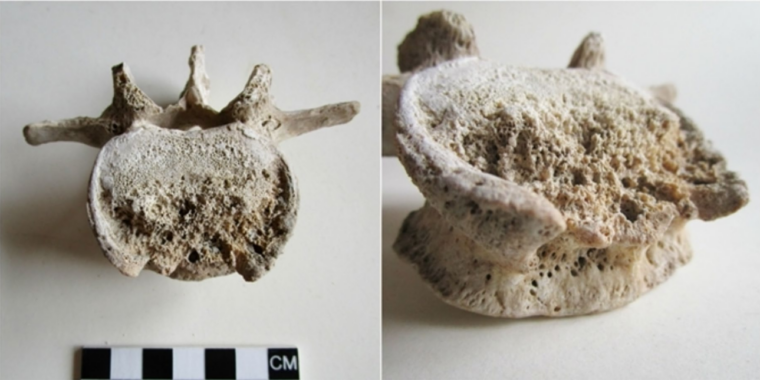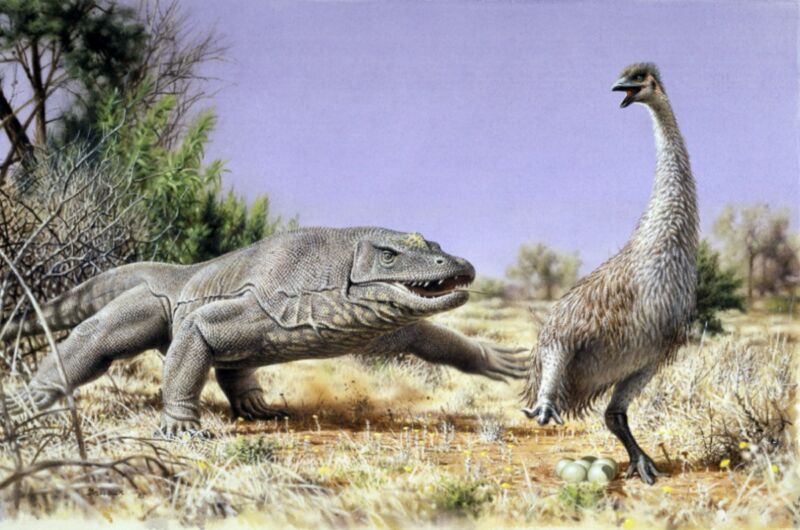
Peter Trusler
Over 65,000 years ago, large flightless birds dubbed “Demon Ducks of Doom” roamed prehistoric Australia. The creatures stood over six and a half feet (two meters) tall, weighed over 440 pounds (200 kgs), and sported massive beaks. They also produced giant cantaloupe-sized eggs that may have served as a food source for early human inhabitants, eventually contributing to the extinction of the demon ducks, according to a new paper published in the Proceedings of the National Academy of Sciences.
Technically known as Genyornis newtoni or mihirung paringmal (“thunder bird”), the species was first described in 1896 based on the discovery of a fossilized left femur excavated from a site at Lake Callabonna in South Australia. Further excavation yielded many more fragments of avian fossils and eventually mostly complete specimens, including the cranium. Similar specimens have since been found at other sites in New South Wales, Queensland, and Western Australia. The species went extinct within a few thousand years after humans arrived in the region.
There are two competing hypotheses for why Genyronis became extinct: climate change or the impact of the arrival of humans. For instance, there is some fossilized evidence that the Genyornis population at the Lake Callabonna site perished because the lake dried up due to climate change, depriving the birds of their water source. However, a 1999 study of more than 700 eggshell fragments concluded that the species’ decline and extinction occurred too rapidly to be attributed to climate change, suggesting that human activity was to blame. Specifically, early humans in the region may have gathered and consumed Genyornis eggs faster than the creatures could lay them and reproduce.
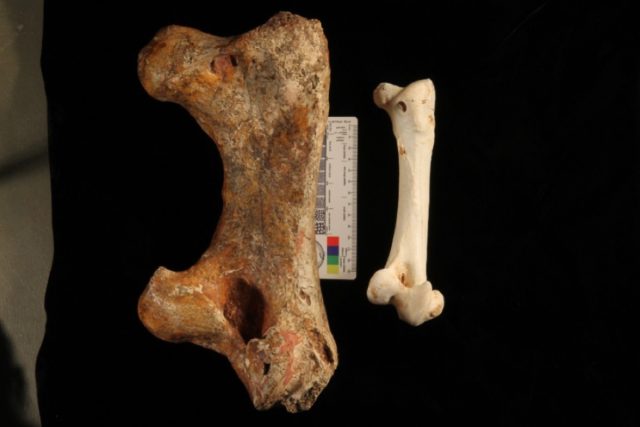
Trevor Worthy
There are thousands of Pleistocene sites across Australia littered with eggshell fragments, some of which show evidence of having been cooked and discarded around a hearth, according to the authors. Most notably, a 2016 study examined eggshell fragments with burn marks collected from some 200 sites and analyzed the amino acid composition. The shells were dated to between 53,900 and 43,400 years ago, and the amino acid gradient was consistent with the eggs having been placed on embers (as opposed to bush fires). Specifically, the amino acids were fully decomposed in the burnt end, with concentrations increasing as the analysis moved further away along the eggshell.
There was also a second type of eggshell from an undetermined species that showed signs of cooking during a much narrower time frame. But did that type of eggshell actually come from Genyornis? The human-induced extinction hypothesis rests heavily on this being the case.
These types of eggshells were first attributed to Genyornis in 1981. The shells were found relatively near skeletal remains and seemed about the right size to have been produced by Genyornis, which is distantly related to modern-day chickens, pheasants, quails, ducks, and geese. People would have collected the eggs from the ground nests built by these large flightless birds, thereby contributing to their extinction.
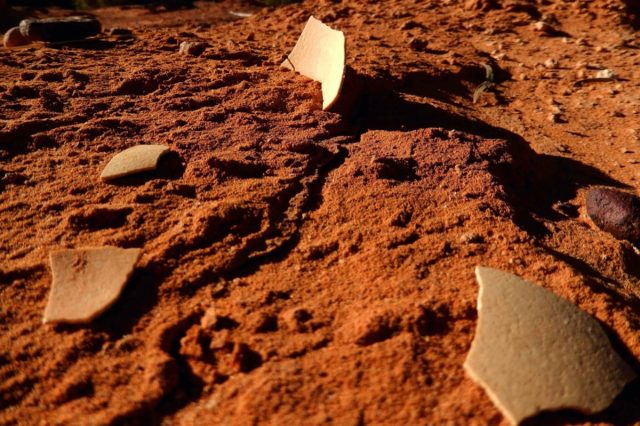
Gifford H. Miller
However, more recent papers have questioned that identification, suggesting that the eggs came from a chicken-like species of extinct megapode, the giant malleefowl (Progura), a smaller mound-building creature with large feet weighing between 11 to 15.4 pounds (5 to 7 kg). These scientists have argued that the eggshell is too thin, and the egg size too small, to have been produced by Genyronis.

